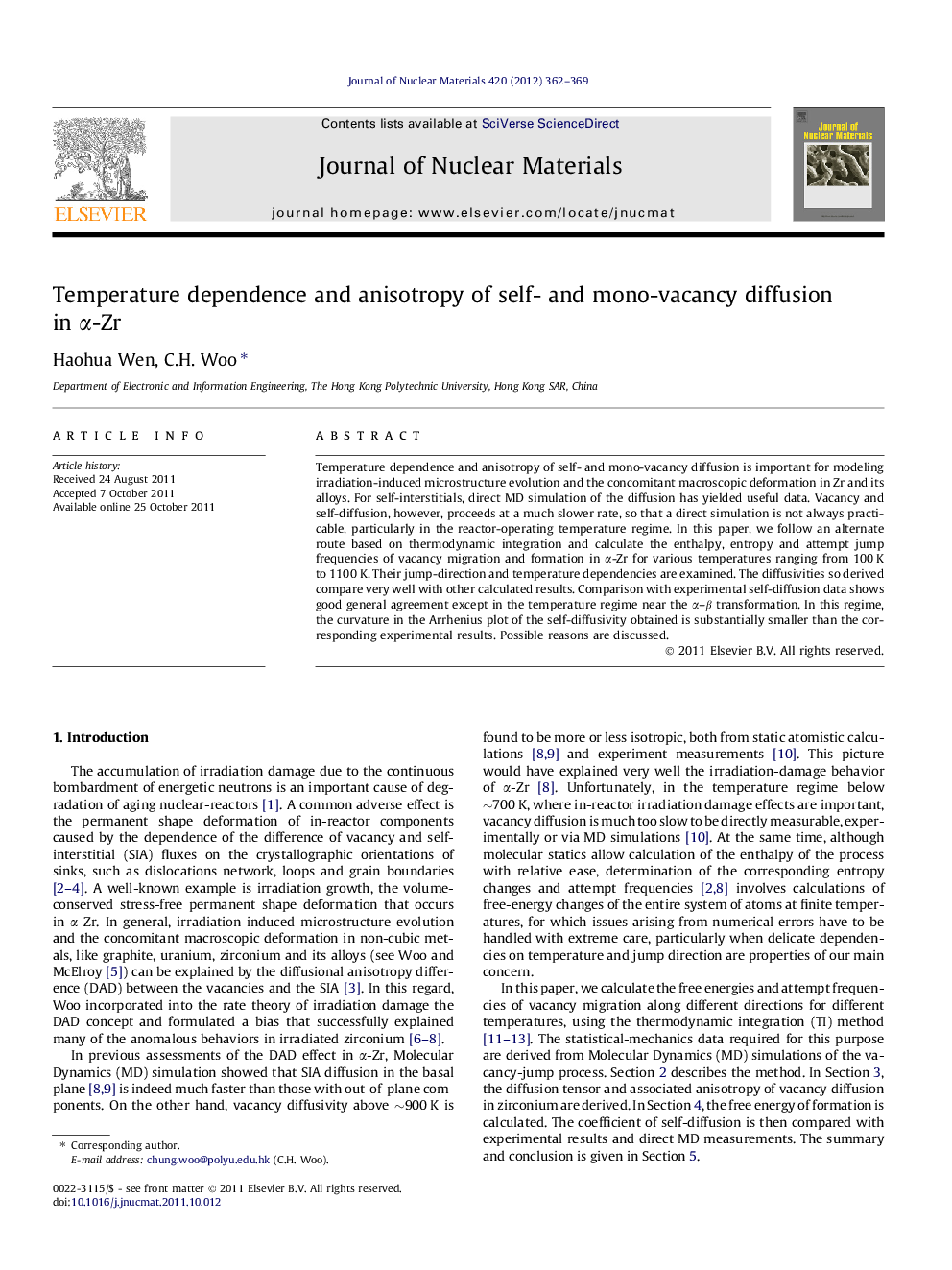| کد مقاله | کد نشریه | سال انتشار | مقاله انگلیسی | نسخه تمام متن |
|---|---|---|---|---|
| 1566480 | 1514226 | 2012 | 8 صفحه PDF | دانلود رایگان |

Temperature dependence and anisotropy of self- and mono-vacancy diffusion is important for modeling irradiation-induced microstructure evolution and the concomitant macroscopic deformation in Zr and its alloys. For self-interstitials, direct MD simulation of the diffusion has yielded useful data. Vacancy and self-diffusion, however, proceeds at a much slower rate, so that a direct simulation is not always practicable, particularly in the reactor-operating temperature regime. In this paper, we follow an alternate route based on thermodynamic integration and calculate the enthalpy, entropy and attempt jump frequencies of vacancy migration and formation in α-Zr for various temperatures ranging from 100 K to 1100 K. Their jump-direction and temperature dependencies are examined. The diffusivities so derived compare very well with other calculated results. Comparison with experimental self-diffusion data shows good general agreement except in the temperature regime near the α–β transformation. In this regime, the curvature in the Arrhenius plot of the self-diffusivity obtained is substantially smaller than the corresponding experimental results. Possible reasons are discussed.
► Temperature dependence and anisotropy of vacancy diffusion in a-Zr are studied.
► Thermodynamic integration is performed on molecular dynamics data.
► Temperature- dependent enthalpy, entropy and jump frequencies are obtained.
► Yet, the curvature of the Arrhenius plot is too small to explain the experiments.
► Possible reasons are discussed.
Journal: Journal of Nuclear Materials - Volume 420, Issues 1–3, January 2012, Pages 362–369